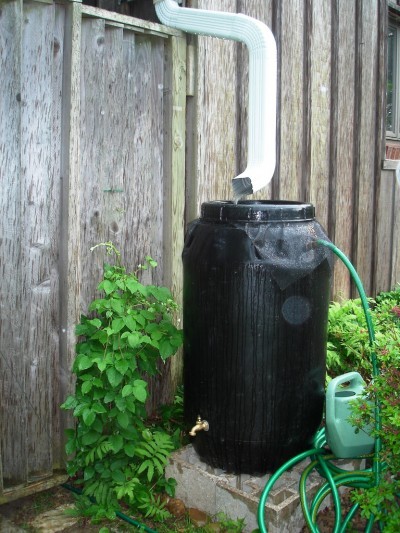






How do you collect rainwater and what are the benefits? Whether you have in interest in water conservation or simply want to save a few dollars on your water bill, collecting rainwater for gardening may be the answer for you. Harvesting rainwater with rain barrels conserves potable water — that’s the water that’s safe to drink.
During the summer, much of our potable water is used outdoors. We fill our pools, wash our cars and water our lawns and gardens. This water must be chemically treated to make it safe for drinking. which is great for you, but not necessarily great for your plants. Collecting rainwater for gardening can eliminate many of these chemical salts and harmful minerals from your soil.
Rainwater is naturally soft. The less water used from your local treatment facility, the fewer chemicals they have to use and the less money they have to spend on those chemicals. There’s savings for you, too. Most home gardeners see a rise in their water bill during the summer gardening months and during a drought, many of us have been forced to choose between our garden and out water bill.
Rainwater collection can reduce your bills during the rainy months and help offset your costs during the dry ones. So how do you collect rainwater? The simplest method for harvesting rainwater is with rain barrels.
Using rain barrels involves no special plumbing. They can be purchased, often through local conservation groups or from catalogs or garden centers, or you can make your own. Prices range from around $70 to $300 or more, depending on the design and aesthetics. The price drops considerably if you make your own. Plastic barrels can be painted to blend with your house or landscape.
How do you collect rainwater for use in the garden? On the most basic level, there are five components. First of all, you need a catchment surface, something the water runs off. For the home gardener, that’s your roof. During a 1-inch rainfall, 90 square feet of roof will shed enough water to fill a 55-gallon drum.
Next, you’ll need a way to direct the flow for rainwater collection. That’s your gutters and downspouts, the same downspouts that direct the water out to your yard or storm sewers.
Now you’ll need a basket filter with a fine screen to keep debris and bugs from your rain barrel, the next component of your rainwater collection system. This barrel should be wide and have a removable lid so it can be cleaned. A 55-gallon drum is perfect.
So now that you’re using rain barrels, how do you get the water to your garden? That’s the last component for collecting rainwater for your garden. You’ll need a spigot installed low on the barrel. An additional spigot can be added higher on the drum for filling watering cans.
Ideally, when using rain barrels, there should also be a method for directing overflow. This can be a hose connected to a second barrel or a piece of drainpipe that leads to the original ground pipe to lead the water away.
Harvesting rainwater with rain barrels is an old idea that has been revived. Our grandmothers dipped their water from the barrels at the side of their house to water their vegetable patch. For them, collecting rainwater for gardening was a necessity. For us, it’s a way to conserve both water and energy and to save a few dollars while we do it.
Learn All About Gardening In This Piece
Everything You Should Know About Gardening
Learn About Modem Gardening Equipment
Garden Fitness: Learn About Exercise In The Garden
Windowless Houseplants: Learn About Using Plants For A Windowless Room
Plants For Pollinators: Learn About Pollinator Friendly Plants
Copyright © www.100flowers.win Botanic Garden All Rights Reserved